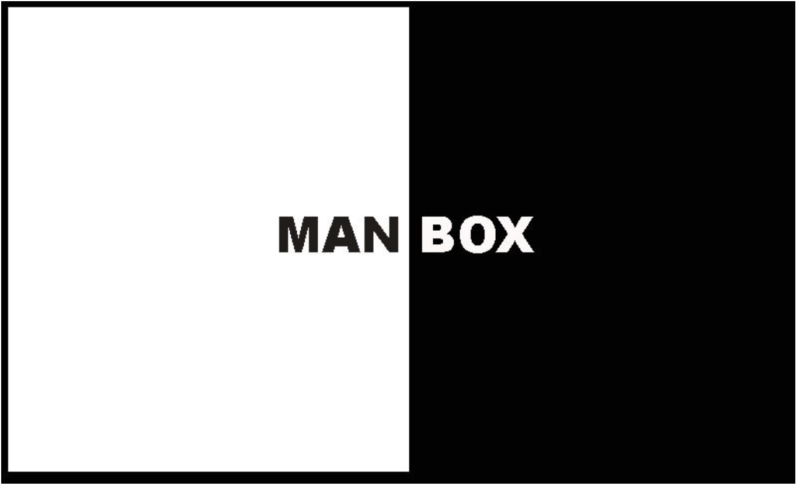Motivation to Change: Willpower and Asking Yourself Why

As a general rule, humans like things they are comfortable with. We like certainty, which is a common reason we experience worries: the unknown can be scary, and our mind is wired to problem-solve things and try to maintain the status quo. We trust what we know.
Yet, we as a species are also wired to want variety, to feel like we are growing. To improve ourselves. So this is a fun tightrope to walk.
. . .
The Depth of the Pull
For me, there’s a deep inner pull that I am meant for more, that I am supposed to do something. A sense that I should be reaching for my potential. This has driven me to study at university, to work in various fields, and to try all kinds of creative projects.
Mostly though, it means I have gathered a LOT of self-development tools over the past couple of decades. I’m a seeker of knowledge, and I want to understand myself.
If you’re anything like me, you also started seeking out answers via self-help books or ‘be your best self’ courses. I moved from resources aimed at ‘design your personality’ to ‘declutter your life’ routines, through to ‘reinvent your thoughts’ and gaining a qualification in actual cognitive behavioural therapy to ‘fix my brokenness.’
Because when I was younger, that sense of “not-at-my-potential-yet” often felt like I wasn’t good enough.
. . .

Photo by Sharon McCutcheon on Unsplash
It turns out, I wasn’t alone.
There are so many of us on this journey. Yet, as much as I followed that drive, very little changed. If you’re like me, you might recognise the next description.
We save the free worksheets, we buy the books and attend the seminars… I take copious amounts of notes, and yet, a few weeks later, we appear to be in the same place. The only thing worse than feeling that you are beyond fixing, not enough as you are… is feeling you had a chance to change that and yet you failed.
This tells me that we’re stuck.
Frustrated. Overwhelmed and unsure where to even begin.
And how much progress do we make when we are stuck? Very little.
So without overcoming this issue, we’re not likely to make much progress. It’s time to employ the step so many of us have missed in our previous attempts at change: reflection.
One of the most common skills employed in modern therapies is that of looking at what does and does not currently work for you. It’s hard to know if we’re on the ‘right path’ if we don’t know where we’re trying to go.
. . .

Photo by Suad Kamardeen on Unsplash
Recognise the Gap (Between Now and Then)
Having a book or worksheet as a resource is not useless, but unless we know what to apply that too to, we end up not using that skill at all!
So before downloading, buying, or reading any resource, I recommend pausing to identify what is pulling you towards that resource.
What are you hoping to achieve through a change? Another way of looking at this is why are you attempting to develop yourself?
Once you identify what is ‘missing’ or what you want to ‘expand’, it becomes much easier to plan changes, make tweaks, and access the right resources.
Most people get stuck by wanting to “just be better” or picking one broad value to aim for, without a clear idea of how that will look or feel.
Any goal, without a destination of SOME kind, is hard to prepare, to plan for, to take steps toward, to measure and to achieve. Because how will we know when we succeed without something to compare against?
. . .
Discovering the Destination
Most of us have some kind of goal at any one time; a decision to change something.
It might be to lose weight, to scale a mountain, or to write a novel. Equally, it may be to make it through therapy or get a promotion at work. Some days it might be to get out of bed and have a shower.
No matter the goal, four things are needed:
- An idea of the destination.
- The next step to take along your current path.
- Motivation to take that next step.
- The decision to commit to that goal.
When thinking about the end-point, you do not need a crystal clear image of the final goal. Often we don’t know quite how something will end up, but we are following some kind of calling, pull or desire that helps lead us in a direction.
Knowing at least why you’re being pulled down a particular path and what drives you forward is super useful when you find yourself blocked by lethargy, exhaustion or an obstacle.
For example, one of the most common “whys” is a call of someone’s creative power rising. It doesn’t have a clearly defined outcome, but it pulls creatives forward no matter what. The same may be true of adventuring wanderers or scholars who are driven to seek out a truth.
. . .

Photo by Lili Popper on Unsplash
Mapping the Path
Once we have the ‘why’, it’s crucial to think about the next step. This is often the key block for creatives who hold a dream or calling that feels “unrealistic.” Equally, if you’ve ever felt like you’ve “already tried everything” and yet SOMETHING tells you to keep trying — this tends to be the problem. As a practical dreamer and system-driven nerd, I love turning those dreams into action steps.
If you can see a lighthouse ahead, but there’s a chasm between you and it; knowing whether the closest bridge is to your left or your right is vital information.
Not having it won’t necessarily stop you, because there are 2 main options to consider.
So a 50:50 chance. But if you can see a bridge and plan out the quickest route to that bridge, your journey is likely to be both quicker and less stressful.
. . .
Take the First Step
So my tip for this problem is to start with any step further along the path. Not the “final destination” as such, but anything that will tell you you’re on the right path.
So when we identify a step ahead of us; be it 2 steps ahead or a destination… then what?
We don’t need a clear vision of the exact situation, but we do need to identify something measurable.
“I want to be fitter” would become “I’d like to walk a mile without stopping for a break” or “I want to fit into THESE jeans.” At this point, we don’t need to worry about a specific deadline, because having a specific action, behaviour, or goal is enough for us to begin making a plan or gathering resources.

Photo by Danielle MacInnes on Unsplash
For example, in 2018, I decided that I wanted to work towards having more physical energy, and my main measure of this was ‘not overeating’.
That was enough for me to look up “meal preparation” videos and “paleo recipe” websites, I bought myself a specific lunchbox and some lentils and beans to “bulk out” some of my meals to help keep me fuller for longer.
For this purpose, knowing “let’s eat less unhealthy food” was enough for me to move forward. Yes, there were plans and actions beyond, but the first step was identifying a stepping-stone ahead of where I started from.
Beyond Planning: Understanding Motivation
So, you’ve got that first step identified; that goal to strive for? Great. What’s next?
The next thing to bear in mind is that it’s normal and common to feel apprehensive about changes. Secondly, realistic goals, where we can measure our progress and see the changes having a positive effect, are massive for maintaining motivation. We need to see progress — we want to know things are moving the right way, that this change is worth the time and effort.
But results take time. We compare ourselves to others or past-us, or even to unrealistic versions of future-us. We feel discouraged, that this is ‘a waste’ and we often fall back into those habits of familiarity. It’s easy — we don’t have to think and question and remember things — it’s just our natural rhythm.
And thus, things remain; stagnant and unfulfilled, or whatever it was you wanted to be different.
Change isn’t easy, which means we need a really strong motivation, a key reason to remind you why you’re making changes.
. . .

Photo by Rostyslav Savchyn on Unsplash
The Why: Exploring the Deep
“Those who have a ‘why’ can bear with almost any ‘how.”
– Victor Frankl, quoted from A Man’s Search for Meaning.
We all experience that sensation of wanting to just… give up or do it later. To take an extra chance to rest or maybe even quit something altogether. But when we re-connect with the ‘why’ of that task — finding the deep motivator can really help keep us on track.
Most people come up with some reason to begin a change — to be happier, to not feel this lethargic anymore, to avoid something bad happening (again), or because we’ve been told we should.
But those abstract concepts can be difficult to connect with. In that moment of routine habit or new choice, your Why needs to be powerful enough to guide you towards the positive choice.
. . .
The key to a strong motivator is depth.
Surface Level: “I know I should eat healthily.”
Well, so do we all. But we remain stuck: comparing ourselves to other, unhealthier people who are fine. We feel we have time to change that later. We’re great at telling ourselves we deserve that cake. That fact alone is not strong enough for most people.
Shallow Waters: “I don’t have time to play with my kids, and I miss being with them. They deserve my time and energy.”
That’s a little deeper; you’ve made a personal connection and used another person as a reminder of why you want to make the change. But really, what is it that means you want this? What, deep down for you, is that reason coming from? Think about the beliefs that shape your world, the motivators for other changes you’ve made. What do you cling to when everything else isn’t strong enough?
The Deep: “Every day I wake up depressed, exhausted and I no longer love my life. I feel like a zombie, following the same old motions. I want that joy I used to have back, to make my mark on the world, to be a good parent, to see my children grow up and to support everyone around me. This is my calling, I just need to reach it.”
Much deeper. Specific to the person, with examples to remind them of what they don’t like now and what they will like in the future. We can see the journey this person wants to take; their current location of being stuck and the destination they want to reach.
- Do you have a dream that isn’t being realised?
- Do you know where you want to go, or feel stuck where you are? Think about your Why.
- What would you change if you had the motivation to?
. . .

*Photo by Gaelle Marcel on Unsplash
Making the Decision
The final piece of this puzzle is to make that decision, that commitment to make a change. Not “if only” or “when I do this, that might happen,” but “okay, I’m doing this.”
Without going into all the details, aspects of the human brain are activated when we make decisions, and specific parts are required when we use motivation, routine actions and those “adaptive decisions” where we need to choose between two options in the moment.
Decisions about human behaviour could have massive impacts on our finances, health, social status and relationships, and thus there are multiple ways to make them. However, one thing we do know is that committing to a goal makes a difference.
If you’ve ever half-arsed a diet, you’ll know what I mean. “Here’s a salad but eh, I’ll have ice cream after because I’m not ‘really’ dieting…”
But the main benefit of committing to goals is that it minimises the need for further decisions.
If you decide to do X, then you’ve already often decided not to Y, Z or A.
And anything that removes decision-fatigue is a) awesome for our mental energy and b) one of those ‘secrets of success’ highlighted by the clothing choices of Steve Jobs and Barack Obama.
I personally find that having pre-arranged systems, where I’ve made all the decisions before I’m in the tempting or habitual situation, increases my likelihood of success. Again, this is a commitment to only having 1 drink, or having chocolate chips on my porridge instead of a chocolate bar… planning those alternatives and having made the commitment removes any ‘but this is an option’ I might find in the moment.

Photo by Tetiana SHYSHKINA on Unsplash
So Commit. Make the decision.
“I will (action), starting (date/time), to complete (outcome).”
Even better, tell someone. Hell, write it down in a private diary: that’s still an improvement on your odds of success.
Then take the first step forward.
. . .
If you would like to reinvent your life (innate motivation included) from the roots of who you already are, check out the Rooted Reinvention Podcast and sign up for the free roadmap to reinventing yourself here.
—
This post was previously published on Change Becomes You.
***
You may also like these posts on The Good Men Project:
 Escape the Act Like a Man Box Escape the Act Like a Man Box |
 What We Talk About When We Talk About Men What We Talk About When We Talk About Men |
 Why I Don’t Want to Talk About Race Why I Don’t Want to Talk About Race |
 The First Myth of the Patriarchy: The Acorn on the Pillow The First Myth of the Patriarchy: The Acorn on the Pillow |
Join The Good Men Project as a Premium Member today.
All Premium Members get to view The Good Men Project with NO ADS.
A $50 annual membership gives you an all access pass. You can be a part of every call, group, class and community.
A $25 annual membership gives you access to one class, one Social Interest group and our online communities.
A $12 annual membership gives you access to our Friday calls with the publisher, our online community.
Register New Account
Log in if you wish to renew an existing subscription.
Need more info? A complete list of benefits is here.
—
Photo credit: Unsplash
The post Motivation to Change: Willpower and Asking Yourself Why appeared first on The Good Men Project.
